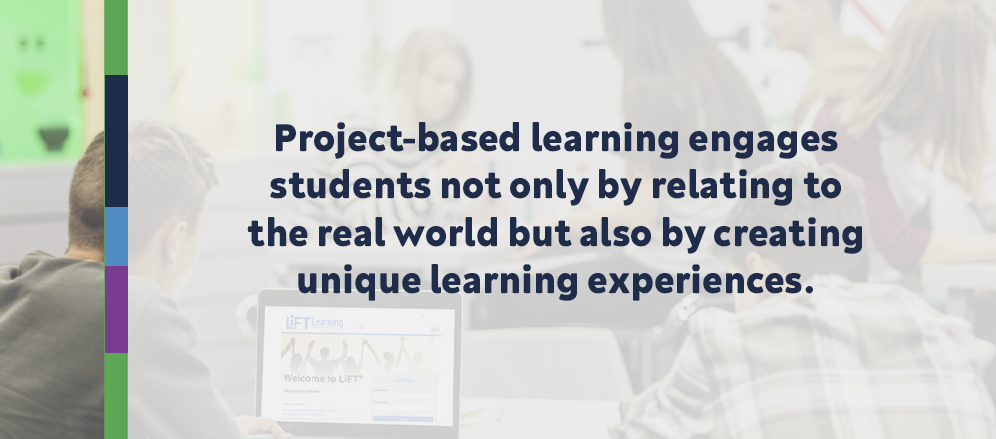Engage with students through Project-Based Learning

When you look back to your school years, what do you remember most? What stands out most vividly for me are the creative projects my teachers assigned and the real-life experiences they shared. In the seventh grade, we designed and furnished an entire house on a given budget. This involved creating and drawing a floor plan and providing samples of paint colors, carpets, and wallpaper. It taught us skills in math, drawing, and managing money. In high school, my history teacher shared slides of his time in Vietnam during the war. Conversations like these give students a look at real-world problems and remind us all that what we learn or do not learn will change the course of history. The way these teachers taught made a lasting impression on me because their lessons related to the real world. Relevance is one of PBLWorks seven core principles to Gold Standard Project Based Learning.
Unique learning experiences
Project-based learning engages students not only by relating to the real world but also by creating unique learning experiences. Students are encouraged to be partners in their learning which makes them feel they have a stake in it. Choosing projects that are hands-on increases engagement, as these activities are more exciting and fun giving students more opportunities to make their own decisions and express their ideas in their own voice. The learning experiences that result are more memorable than those of a traditional classroom. These unique learning experiences make students care more about what they learn and understand why it matters because they take ownership of their learning.
Sustained inquiry
Long-term projects engage students by providing opportunities for a deeper understanding of the content through sustained inquiry. Sustained inquiry is more than simply asking questions. It is the act of inquiry itself. When students spend more time digging into a topic, they go beyond a superficial level of comprehension and become more knowledgeable. The more time they spend investigating, collaborating, problem-solving, experiencing and brainstorming, the more invested they will be in the outcome. Through sustained inquiry, students learn how to ask manageable questions that lead to further questioning. Sustained inquiry engages students in their learning and teaches them important skills that they will be able to use in their everyday lives and to better understand the world around them.
Opportunities for student input
Project-based learning encourages students to have input in deciding what subjects to study depending on their preferences. By providing students with an open-ended question or task and letting them choose their own ways to approach it, teachers allow students the freedom and space to explore the things that interest them most. When students have opportunities for input in their learning, they find their assignments to be more fun, challenging, inspiring, and meaningful. Research shows that students stay on task and perform better when they are put in charge of their own learning experiences.
Presenting and sharing student work
Having students present their work to the public gives them an opportunity to reflect on and to showcase what they learned and how they learned it. In presenting their work to an audience, students develop skills in explaining their ideas in their own words, which requires a deeper understanding. Making a public event with a call to action the culmination of a project is a powerful way to engage students; it shows them that their work has relevance to a broader audience and gives them an increased sense of purpose. It allows them to practice skills that transfer to the workplace such as communication, public speaking, and persuasion.
A project-based learning approach increases student engagement by creating a classroom environment that is energized, active, participatory, and experiential. Students are excited to be there as it provides them with a connection to what they are learning, to their teachers and peers, and to the larger community. By engaging students in their learning, a project-based approach makes a lasting impression on students and creates knowledge and experiences that they will remember, value, and cherish for years to come.
References
Almulla, M. A. (2020). The Effectiveness of the Project-Based Learning (PBL) Approach as a Way to Engage Students in Learning. SAGE Open. https://doi.org/10.1177/2158244020938702
Rothstein, D. Santana, L. (2011). Teaching Students to Ask Their Own Questions. Harvard Education Letter. Volume 27, Number 5. https://www.hepg.org/hel-home/issues/27_5/helarticle/teaching-students-to-ask-their-own-questions_507#


